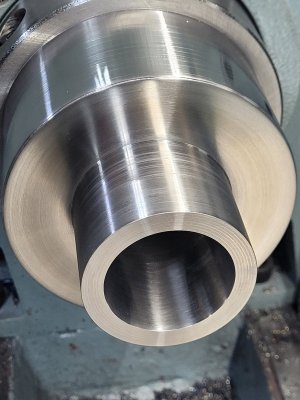Brian H
Super User
I know these are readily available for purchase, but I just wanted to see if I could do it. The first challenge was getting the D1-4 pins and lock screws right. Now for the taper of the collet. Before I tackle the threading I'll practice on some scrap pieces.
I put a witness mark on the chuck and spindle so theoretically it will stay concentric.
I put a witness mark on the chuck and spindle so theoretically it will stay concentric.



